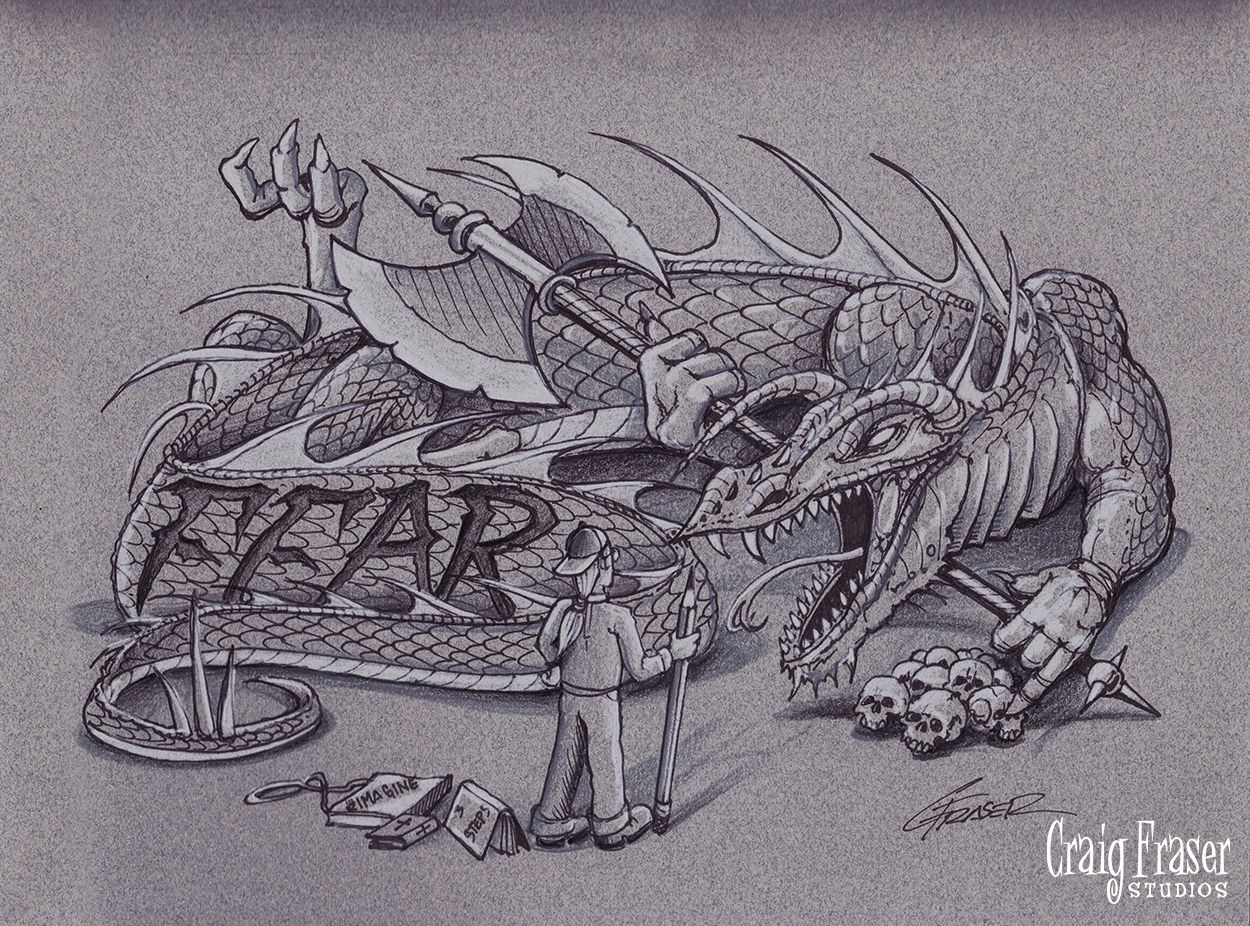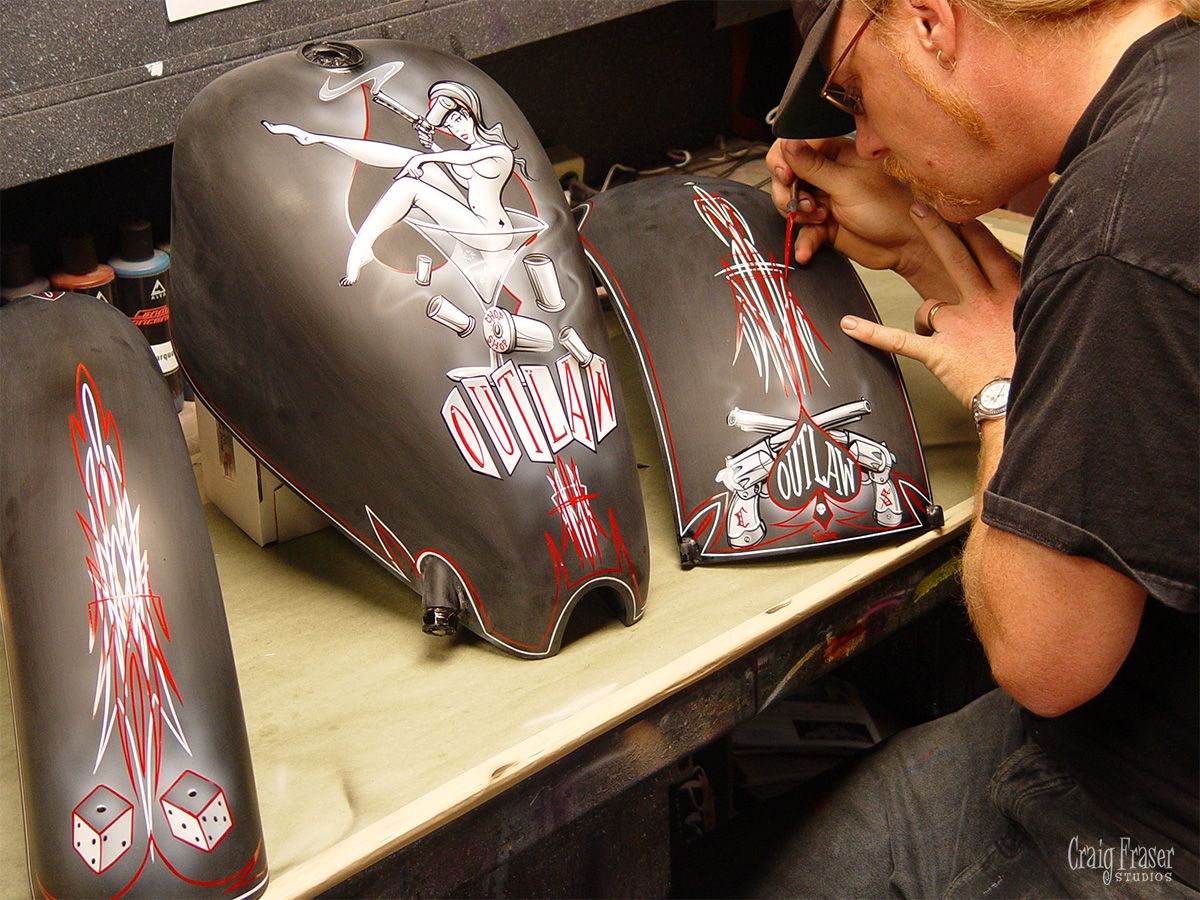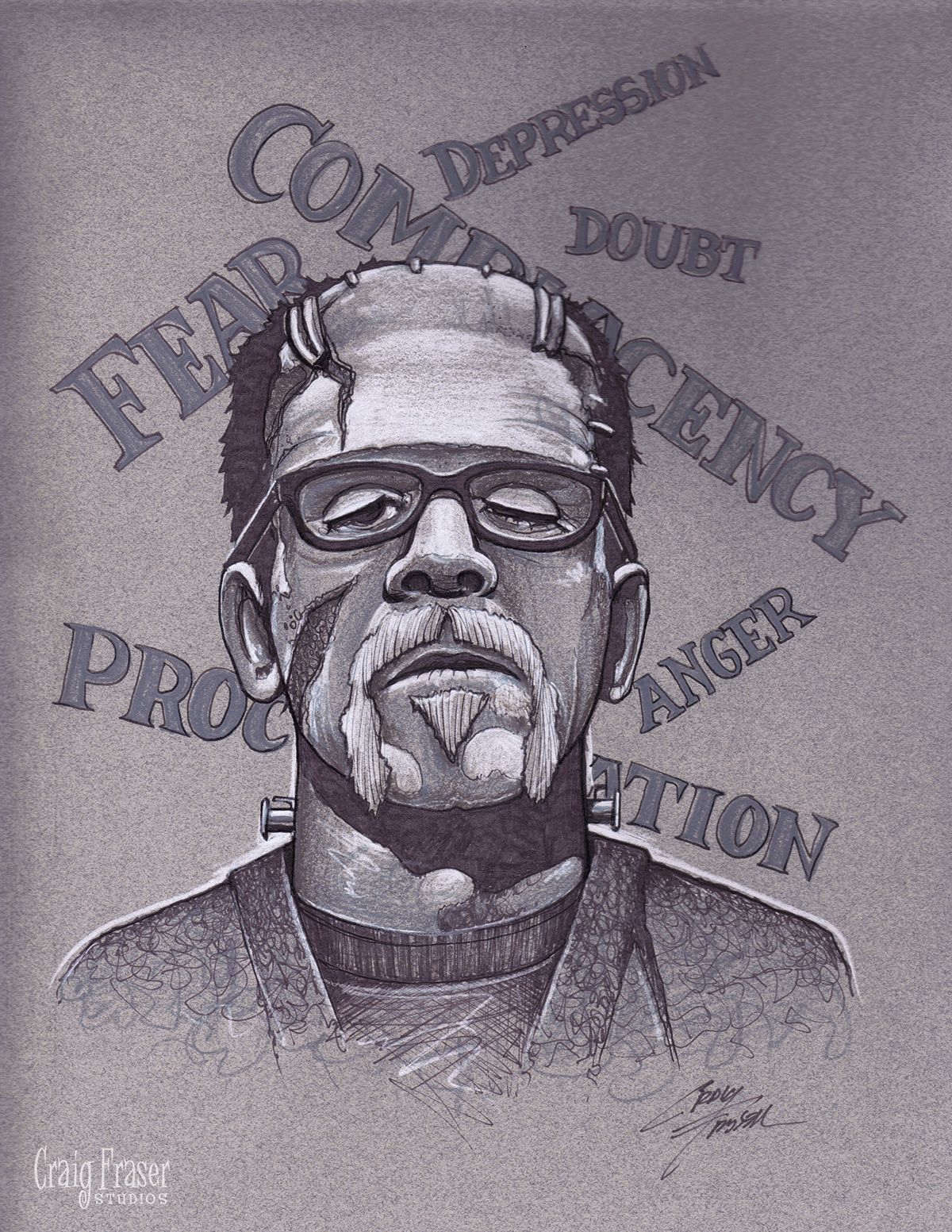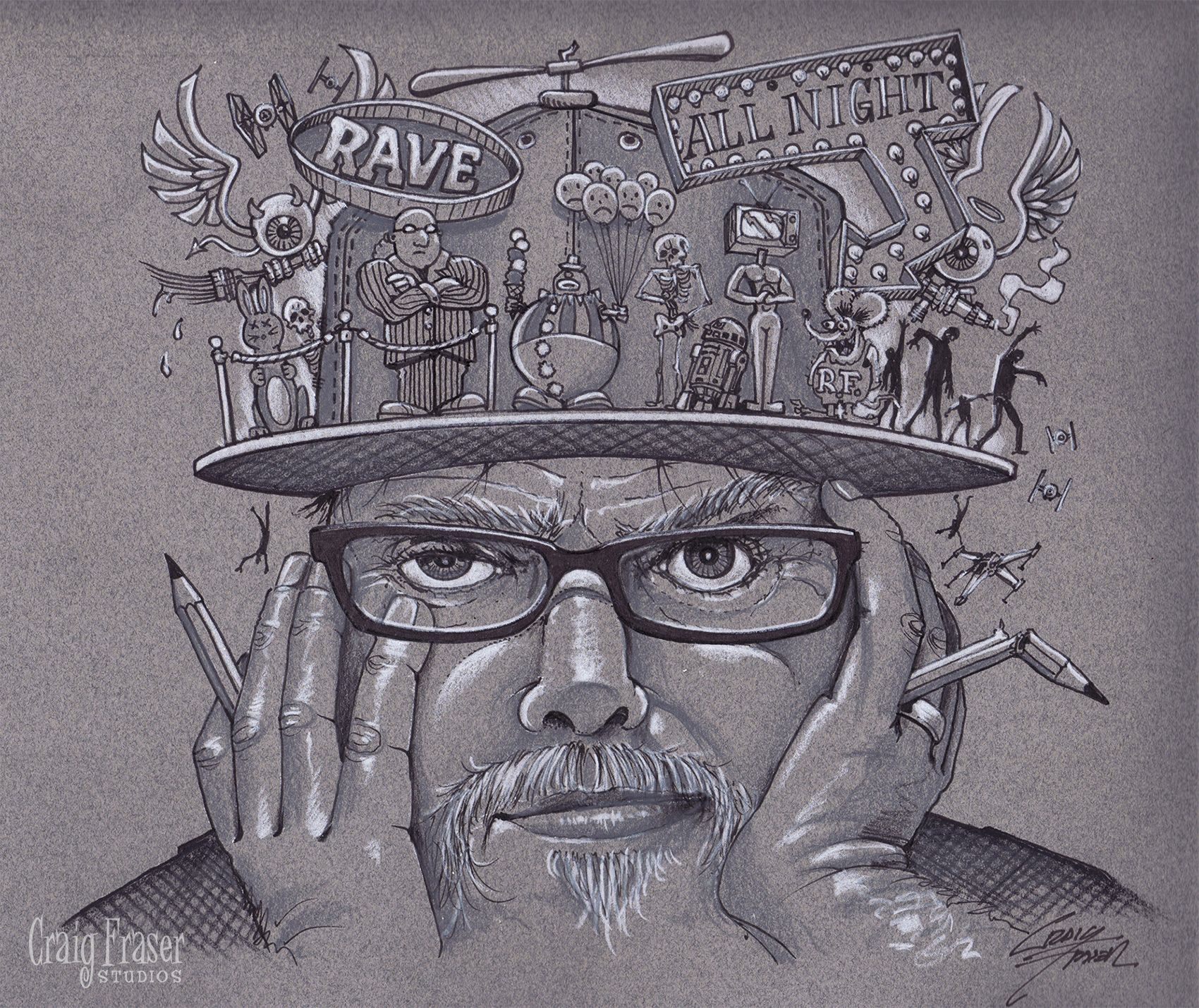One of the biggest obstacles that we all face in our lifetime is fear. We have all heard the quote: “There is nothing to fear but fear itself”. Good words, but they can be a bit hollow if you are in the grip of fear. How we deal with fear defines whether our lives are a success, or a failure. Fear is usually subjective and rarely universal by nature. As individuals we need to learn to define and deal with our fears in our own unique way. If we do not define our fears, they will define us.
I remember a student asking me how I handled painting a mural on the hood of an expensive car, such as a Porsche. I responded that there was no real difference between a Chevy Truck hood, and a Porsche hood. He stated that he would be afraid of ruining the Porsche hood. My first response was to ask what he was painting the hood with. A Hammer? This got a laugh from the class, but the fear in question still remained.
To demonstrate, I took a roll of 18″ masking paper and unrolled 20 feet of it on the ground. I asked each student if they could walk the length of it without touching the carpet on either side for $100 (Hypothetically of course). If they accidentally touched either side, they could try again for $50. Of course they all agreed they would try it. Fine, abilities have been determined. Now lets take that 18″x 20 foot path and suspend it 200ft in the air between two buildings. I offer to take away wind, vibration, birds, etc. In short, it was just them and the path. Only a few people kept there hands raised that they would even attempt it. (They all put their hands down when I asked if they would get back in line for $50 after falling).
So what was the difference? The difference was consequence. The consequences of falling 200 feet were much greater than the benefit of the $100 in making it. Rational fear is based on real consequence. Irrational fear is based on false perception. For the Porsche hood, the consequences were falsely perceived, therefore they have no merit. The trick is to know your fear for what it is, true or perceived.
3 Simple Steps To Distinguishing & Conquering Irrational Fear:
- First you must analyze the subject to find the specific fear involved: Sometimes there may be more than one. The student that was afraid to paint the hood mural only stated his fear of ruining it. There may be more underneath that statement. Why did he mention Porsche? Is he not worried about the Chevy Truck, or does he not care about Chevy trucks so ruining them is fine? Whether you are analyzing your own fear or another’s, it is important to get as much information as possible.
- Secondly you must separate the true fears from the perceived, or imaginary: This is a crucial step since rational fears can be tools towards self-improvement or even warning flags. For instance: If he cannot prep or clearcoat the hood, the fear of ruining the job is a legitimate one. This can be motivation towards either learning the skill, or jobbing it out to another. If he has been afraid of Porsches his entire life because he thinks they are evil, well that is something different all together.
- Third, you must conquer it: The best solution to anything is accomplishment. Even if accompanied by failure, accomplishment is better than nothing. Remember, the only way we truly learn is by working through our initial failures. Use your rational fears as a road map towards what practical steps you need to take to finish the task at hand. Then use these accomplishments to fuel your ability to overcome your irrational fears.
These three steps appear simple because they are. This by no means implies that these actions are easy. Some of the most difficult tasks we will undertake in life are simple by definition. The key is to do them none the less. Whether you follow my 3 steps or make up your own, the important part is to deal directly with your fears, not run from them.
Only by confronting our fears do we truly learn from our failures and move forward. If you think about it, the only thing to truly fear would be a life without failure. That would be an uneventful life with no challenge, or change. It wouldn’t be much of a life at all.
I hope you have found this discussion on fear to be insightful and helpful. If you have any personal experiences, or suggestions to add, I would love to read them in the comment section. Please join my email list, and continue the discussion.
– Craig Fraser







Til I read this i was never able to get to the root of the problem of why I gave up many aspects of art. I only stuck to the use of computers for the fear of failure. I have only started to draw again by hand. Great post Craig.
Really enjoyed the blog post on the subject of fear, thank you good stuff!
Great stuff, Craig! I really appreciated to idea of separating the rational from irrational and crafting a plan to conquer it.
Your steps for overcoming fear is right on. I enjoyed reading your blog post and hope to see more in the future.
Great read Craig! I think I need to take your tips and apply them when I find myself procrastinating out of fear. Strangely enough I fear the simple tasks in life but not the most risky if that makes sense? I would be the one with my hand still held up to walk that distance 200 ft in the air, but put me on the ground with an audience and bam frozen. A simple task I KNOW I can do but the fear of not pleasing the crowd had always stopped me dead in my tracks. I really need to work on that. These tips will help alot. Thanks for the post!
Craig that is so true. if I feel intimidated or have any fears about a project I’m going to be involved in, I usually put my blinders on and really focus on the project and 99.9% of the time I end up with better results than expected. we have to learn to use fear as a tool to get better results.
Very insightful! Recognizing our fears and taking the time to think about them rationally.
Great post Craig. Analyzing your fear and deciding how to act moving forward is really an important skill set to have and one that I need to work on to improve. Irrational fear can be a true limiting/controlling force in your life but if you can move through the emotion and positively deal with the issues that are causing it then you can definitely flip the equation and use it as a motivating tool.
The idea of accomplishing your way through fear appealed to me. I have often sided on just not doing something, and then I wonder why life is dulling down??!
Well said Craig sometimes it’s one of those days where I want to throw the towel in , but in these days where you have these customers needing jobs done yesterday ASAP where they think you have to bump them up to the top ,next on the list, then I think of rushing the job or pulling a all nighter but then I regroup I think I will do this the way I would do for me all I want is a big wow from the customer so they can get a wow from their customers , the fear of taking on to much work or the fear of telling your customer there’s 2 to 4 weeks before I can get to it. The real customers will wait. Thanks again Craig
I would add to this that you also must change your relationship with fear. Fear of failure in particular. Rather than viewing failures in a negative sense, see them as inevitable steps to be taken toward progress; a necessary tool for learning. I’ve let fear prevent me from achieving any of my goals forest of my life. Now, at nearly 40 years old I have begun confronting those old irrational fears and am seeing doors opening everywhere as a result!
Exactly! By viewing fear as a tool, you change your relationship with fear from a negative to a positive influence. At nearly 40 you’ve beat me to this conclusion bu a decade! 😉 Thanks for the comments!